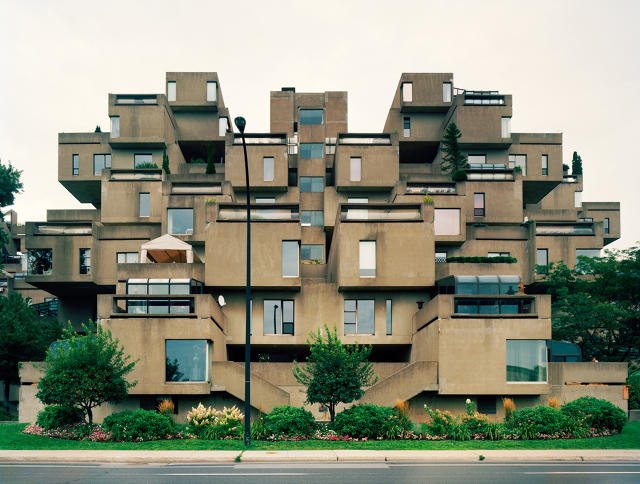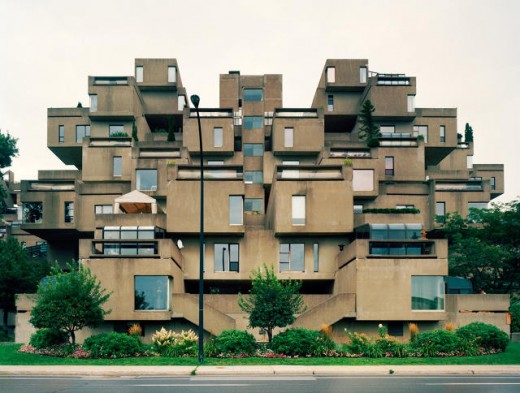Revisiting The Architectural Landmarks Of Past World’s Fairs
Some aged gracefully. Others not so much.
We owe a handful of some of the most iconic works of architecture to World’s Fairs, like the Eiffel Tower, the Space Needle, and Habitat ’67. Today the structures might be a photo-op for design-savvy tourists, but they’re also relics that reflect aspirations of generations past. After photographer Jade Doskow visited one of the sites on a family vacation, she was hooked on documenting their present-day conditions.

“I came across the 1992 Seville World Expo site,” she says. “It was very, very surreal. It wasn’t ‘grand’ architecture, but it felt ambitious and futuristic. There were weeds growing around, beer cans strewn about. People were nonchalant about it. I wanted to find out why it was like this.”
Since beginning her World’s Fair series in 2007, Doskow has traveled to all of the sites in North America, sometimes revisiting them multiple times. “They’re the pinnacles of cultural desire,” she says. “There’s a bit of mystery and time travel to them.”
What attracts her to the subject is how they’ve outlived their original intention and how cities have either repurposed them or let them crumble. With a 4×5 large-format camera, Doskow carefully frames shots of the fairgrounds within cityscapes. “I don’t consider these straight documentary photographs,” she says. “It’s my interpretive feeling of how the sites coexist with the current world.”
Some sites have fared remarkably well. San Diego turned the the site of the 1915 Panama-California expo into a popular park and cultural center. Buckminster Fuller’s Biosphere for the 1967 Montreal Expo is mostly intact, save for the geodesic dome’s acrylic shell that burned in 1976 during repairs.
Others haven’t stood the test of time. While Flushing Meadows in Queens—the site of the 1939 and 1964 fairs—is now a recreational park, many of the fair structures built on the grounds have fallen into disrepair. There’s currently a grassroots preservation effort to resuscitate the Philip Johnson–designed viewing pavilion dating from 1964.
In the case of the 1893 World’s Columbian Expo in Chicago—which was the subject of Eric Larson’s book Devil in the White City—only two of the 200 structures exist. When Doskow visited the HemisFair site in San Antonio, she witnessed buildings in the demolition process.
Doskow hopes that her series helps people understand how our cities take shape. “I want people to think about how our dreams and goals have been made visible through architecture, landscape design, and art,” she says.
[All Photos: Jade Doskow]
Fast Company , Read Full Story
(124)



